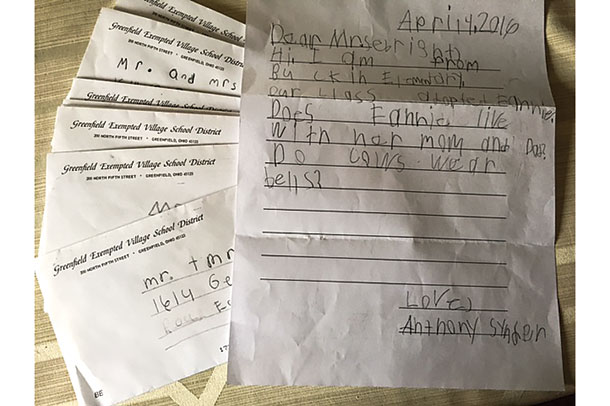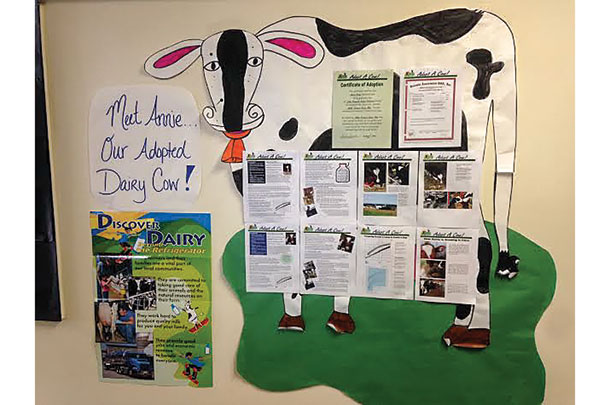STEM is the new “buzz word” in education. Policy-makers, curriculum developers and school administrators across the country are looking for ways to incorporate science, technology, engineering and math (STEM) into the teaching platforms preparing tomorrow’s leaders.
According to the U.S. Department of Commerce, STEM-related careers are growing at a rate of about 17 percent while others are only seeing a 9.8 percent growth. The next generation’s career fields will revolve around STEM.
But in the agricultural education industry, many people say that STEM should actually be STEAM, or science, technology, engineering, agriculture and math. Teaching about agriculture and where food comes from provides a natural platform to teach the science, technology and math prioritized as a need in our educational systems.
Since the early introduction of formal agricultural education, high school agricultural instructors were utilizing STEM, coupling academic concepts to real-world lessons in math, science and technology. Now, elementary and middle school instructors are seeking to do the same.
It comes as no surprise that many of these educators are now incorporating agricultural education units as avenues to demonstrate learning objectives from required classes, such as English, math, science and social studies.
Using agriculture as a platform to reach STEM serves two purposes. In a world where most young people are more than two generations removed from the farm, connecting students to where their food comes from helps them develop an appreciation and understanding of our food and fiber system.
But also with the tremendous amount of science, math and technology involved in today’s agricultural systems, it provides a natural medium to teach educational standards in these subject areas.
Build it and they will come
Any dairy producer who has ever hosted a field trip for a group of elementary students knows how rewarding it is to see the students’ faces light up when they see milk flow from the milker or a baby calf drink out of a gigantic bottle. It’s obvious the lasting impact this one-day experience has on those students.
However, with field trips being increasingly more restricted, it’s difficult for every school to take their students to a farm.
In 2008, to give more students that experience, the Center for Dairy Excellence and Pennsylvania Dairy Promotion Program put together a comprehensive curriculum that could bring the farm to the classroom for those students who couldn’t take field trips to farms.
 Discover Dairy was developed as a comprehensive, multi-faceted, multi-level educational series teaching students how dairy farms contribute to our world through animal care, environmental stewardship, milk safety and economic support.
Discover Dairy was developed as a comprehensive, multi-faceted, multi-level educational series teaching students how dairy farms contribute to our world through animal care, environmental stewardship, milk safety and economic support.
Today, the program includes five upper elementary lessons, with video motivators, reading guides, lesson plans and assessment-based learning tools. It also includes four two-part middle school lesson plans that encompass video motivators, reading selections, lesson plans, testing tools and comprehensive lab instruction resources.
Just a few of the concepts taught in the lesson series include food safety, recycling on the dairy farm, selective breeding, the dairy cow’s life cycle and how money flows through a community.
Since its launch in 2008, more than 1,500 teachers have enrolled in the program, with more than 350 registering during the 2015-2016 academic year.
By offering an engaging, interactive and cross-curricular lesson series, elementary and middle school students can grasp educational standards such as the difference between substances being acidic or a base, the type of impact farms, homes and businesses pose to the environment or how taxes and finance systems work – all while also learning about dairy farming.
A lasting impression
In addition to the lesson resources, the program’s website offers enrichment opportunities for teachers and students. These include a children’s literature list, opportunities to write to a dairy farmer, dairy-based educational computer games and the option for classes to “Adopt A Cow.”

In the 2015-2016 school year, 87 teachers from 23 different states adopted a calf through the program and received three updates during the year to learn more about their calf and how it is being cared for on the farm. Each update included an in-depth lesson and activity ideas for the classroom.
Resources for farmers planning farm tours and reaching out to classrooms are also available in the “Farmer Tools” section of the website.
As today’s youth prepare for careers utilizing STEM, dairy farms are great platforms for students to exhibit and demonstrate their skills through hands-on, problem-based learning situations.
Through encouraging educators to utilize resources like Discover Dairy, the dairy industry can help students not only leave the classroom with a greater understanding of where their food comes from but come away with skills that can be used throughout a variety of disciplines. PD
Visit Discover Dairy and Animal Care for more information about the Educational Series .
PHOTO 1: Students participating in the Adopt A Cow program this past school year had the opportunity to Skype with their adopted calf and learn about the care she receives at Farview Holsteins Farm in East Berlin, Pennsylvania. Lauren Mancias, an educator from Berks County, Pennsylvania, viewed the opportunity as a “virtual field trip” for the 102 fourth graders who participated in the program.
PHOTO 2: A pen pal opportunity through the program gives students the opportunity to sharpen their writing skills while asking questions about what happens on the dairy farm. Patricia McGuire, an elementary teacher from Highland County, Ohio, had her second grade students write letters to the calf’s owner asking what being a dairy farmer is like and the care of their calf.
PHOTO 3: Students participating in the Discover Dairy program were encouraged to do bulletin board displays for the entire school body to learn about the care dairy animals receive on the farm. Photos courtesy Center for Dairy Excellence.
Mary Foote is the dairy education program coordinator with the Center for Dairy Excellence. Email Mary Foote.



